Lectures 2007
January 26
A Fascination with Mammals
by Dr. Heather Roberts
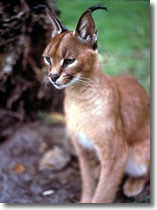 From echidna to platypus to kangaroo and tiger, mammals are extremely important to humans. Providers of major goods and services to us, they are also keystone species of Earth’s ecosystems—both on land and at sea. From the tiniest shrews to the largest whales, mammals provide us with immeasurable value and pleasure.
From echidna to platypus to kangaroo and tiger, mammals are extremely important to humans. Providers of major goods and services to us, they are also keystone species of Earth’s ecosystems—both on land and at sea. From the tiniest shrews to the largest whales, mammals provide us with immeasurable value and pleasure.
Heather Roberts, anatomy professor at Sierra College, has devoted her career to studying mammals. She will discuss mammal significance (ecologic and economic) while providing photos and stories of her research with these fascinating vertebrates.
February 23
California Gold – The Quaking Aspen
by David Burton
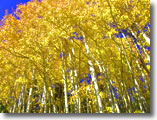 A brilliant signature of Fall in the High Sierra, the Quaking Aspen dazzles us with yellow, red, and gold leaves, shimmering in the wind. By providing important habitat, aspens form ecological communities rich in biodiversity. Myriad bird and mammal species depend upon them for their survival. Human watersheds are protected and purified by them. Most westerners recognize these beautiful trees by their tall slender trunks of smooth white bark, but few know of their current plight. Today, human activities have reduced Quaking Aspen by more than half its historical range.
A brilliant signature of Fall in the High Sierra, the Quaking Aspen dazzles us with yellow, red, and gold leaves, shimmering in the wind. By providing important habitat, aspens form ecological communities rich in biodiversity. Myriad bird and mammal species depend upon them for their survival. Human watersheds are protected and purified by them. Most westerners recognize these beautiful trees by their tall slender trunks of smooth white bark, but few know of their current plight. Today, human activities have reduced Quaking Aspen by more than half its historical range.
Join aspen researcher David Burton for a photo-illustrated discussion of this vanishing species and what is being done to increase its chances of survival.
March 15
Tom Killion, Printmaker
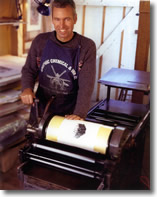 A slide-illustrated lecture on the making of The High Sierra of California, in collaboration with poet Gary Snyder. Mr. Killion will discuss the production of the book and the techniques of multi-block color printmaking.
A slide-illustrated lecture on the making of The High Sierra of California, in collaboration with poet Gary Snyder. Mr. Killion will discuss the production of the book and the techniques of multi-block color printmaking.
Fine art prints by Mr. Killion will be available for viewing and purchase. Visit www.tomkillion.com
April 20
The Tramp and the Roughrider: John Muir and Teddy Roosevelt
By Lee Stetson and Alan Sutterfield
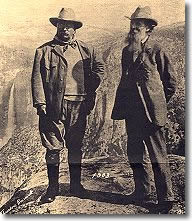 Back by popular demand is this lively reenactment of the famous 1903 meeting of President Theodore Roosevelt and California naturalist, John Muir.
Returning to Sierra College for his annual "Muir visit" during Earth Day week, Lee will bring Teddy (Alan Sutterfield) along and perform this popular historical play (written and directed by Lee Stetson).
Back by popular demand is this lively reenactment of the famous 1903 meeting of President Theodore Roosevelt and California naturalist, John Muir.
Returning to Sierra College for his annual "Muir visit" during Earth Day week, Lee will bring Teddy (Alan Sutterfield) along and perform this popular historical play (written and directed by Lee Stetson).
In May of 1903 President Theodore Roosevelt invited naturalist John Muir to join him on a four-day camping trip in the Yosemite wilderness. The Tramp and the Roughrider illuminates this extraordinary encounter, with the action unfolding at sunset on Glacier Point, overlooking magnificent Yosemite Valley. Both characters were feisty and opinionated. The had sharp disagreements on issues like hunting, animal rights and forest management. Muir’s poetic and evangelistic temperament, clashing with Roosevelt’s political and boyish enthusiasms, naturally spawned both tension and humor.
Both skillful storytellers, it seems natural that both would seek to top one another by relating some of their many adventures in the American wilderness—Roosevelt bring a frontier ruffian to justice, for example, or Muir telling of his hair-raising “interview” with a Yosemite bear. At the time of this historic meeting, many millions of acres of our western forests, with little or no governmental supervision, were being exploited and abused by hunting, lumbering, grazing, and mining interests. But around the campfire, sifting through their histories and their hopes, these very different men slowly discovered how the other had been shaped by the wilderness they both loved—opening up some rich possibilities for “doing some forest good.”
Join professional actors Lee Stetson and Alan Butterfield for this rare performance, commemorating this historically significant event in American history.
March 23
The Sierra Nevada Project
John Muir Laws
 Naturalist-artist John (Jack) Muir Laws has created an illustrated field guide to more than 1,700 species of plants and animals of the Sierra Nevada. Currently at press, this comprehensive and easy to use guide will assist all Sierra enthusiasts in the identification of trees, shrubs, flowers, mammals, birds, reptiles, amphibians, fish, insects—even mushrooms and lichens! A tireless field naturalist and teacher, Jack will discuss this enormous project, his life in the field, and his passion for the Sierra Nevada.
Naturalist-artist John (Jack) Muir Laws has created an illustrated field guide to more than 1,700 species of plants and animals of the Sierra Nevada. Currently at press, this comprehensive and easy to use guide will assist all Sierra enthusiasts in the identification of trees, shrubs, flowers, mammals, birds, reptiles, amphibians, fish, insects—even mushrooms and lichens! A tireless field naturalist and teacher, Jack will discuss this enormous project, his life in the field, and his passion for the Sierra Nevada.
For a glimpse of his work, go to www.johnmuirlaws.com
April 27
"Volcanoes Within Reach"
Dr. Lisa Hammersley, Volcanologist, CSU Sacramento
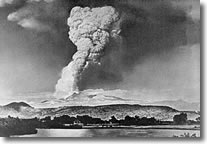 We live within "reach" of three important volcanic regions—Clear Lake, Mt. Lassen, and Long Valley—all identified by experts as "High Threat" or "Very High Threat" regions. Highly active in North America's turbulent past, these three "sleeping giants" are constantly monitored for potential renewed activity.
We live within "reach" of three important volcanic regions—Clear Lake, Mt. Lassen, and Long Valley—all identified by experts as "High Threat" or "Very High Threat" regions. Highly active in North America's turbulent past, these three "sleeping giants" are constantly monitored for potential renewed activity.
Dr. Lisa Hammersley will provide a slide-illustrated exploration of each of these three very different volcanic systems, their energetic pasts and interpretations of their current status. Dr. Hammersley's studies of magma chambers and volcanic systems have taken her from Ecuador to Mexico and now to Northern California.
April 28
Spring Wild Flower Show and Native Plant Sale
The California Native Plant Society
Featured at this event will be:
- Wildflower show-spectacular native plants in bloom
- Wildflower walk with botany instructor Shawna Martinez at 11:00 am
- Native plant gardening advice: bring your questions & talk to experts
- California native trees, shrubs, perennials, and seeds
- Books, poster, and note cards of native plants
- Beautiful color botanical image T-shirts by Delo Rio
- Great Mother’s Day gifts
As a special feature, locally raised young native mountain dogwoods will be offered for sale this year."
This event is sponsored by the Sierra College Natural History Museum and benefits the Redbud Chapter, California Native Plant Society of Nevada and Placer Counties.
Sept. 21
The Honey Bee and Varroa Mite—Evolution in Action
by Randy Oliver – The Thoughtful Beekeeper
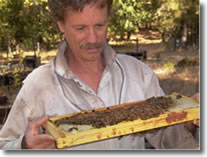 Randy Oliver is a commercial beekeeper from Grass Valley, and a bee researcher and writer. His focus is on digesting scientific research from various fields and applying it to practical beekeeping. His articles cover managing the Varroa mite without chemicals, bee nutrition, and the pollination of California's agricultural crops. His presentation will discuss the natural history of one of the world’s most important insects and current concerns for its welfare.
Randy Oliver is a commercial beekeeper from Grass Valley, and a bee researcher and writer. His focus is on digesting scientific research from various fields and applying it to practical beekeeping. His articles cover managing the Varroa mite without chemicals, bee nutrition, and the pollination of California's agricultural crops. His presentation will discuss the natural history of one of the world’s most important insects and current concerns for its welfare.
Randy has a Master's Degree in biological sciences, and corresponds with bee researchers and beekeepers worldwide. His website is at www.randyoliver.com
Oct 19
Costa Rica Natural History
by Dick Hilton and Shawna Martinez
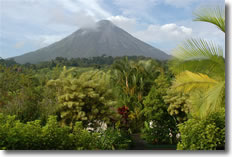 Costa Rica, a tiny Central American country situated between Nicaragua and Panama is only 51,000 square miles, about the size of Virginia, but it hosts a diversity of species that is unrivaled in the North America. Some say it houses nearly a third of all the Earth's species! It boasts 878 species of birds (57 are hummingbirds), at least 228 species of mammals (mostly bats), 1250 species of butterflies, over 10,000 plants, and more than 400,000 species of insects.
Costa Rica, a tiny Central American country situated between Nicaragua and Panama is only 51,000 square miles, about the size of Virginia, but it hosts a diversity of species that is unrivaled in the North America. Some say it houses nearly a third of all the Earth's species! It boasts 878 species of birds (57 are hummingbirds), at least 228 species of mammals (mostly bats), 1250 species of butterflies, over 10,000 plants, and more than 400,000 species of insects.
This incredible land of dry savanna, steaming jungles, subalpine shrublands, and misty cloud forests has managed to set aside nearly one-fourth of its land in national parks and private reserves. Costa Rica's incredible biological diversity is attributed to its varied climate and topography that derives from old and active volcanoes forming the backbone down the middle of this country.
Join Sierra College geologist Dick Hilton and botanist Shawna Martinez as they show photographs and discuss the incredible wonders of this renowned country.
Nov. 16
Carnivorous Plants: An Insect's Nightmare
by Dr. Barry Rice
 Not all plants are benign! More than 600 species around the world kill for their sustenance, and approximately a dozen of these murderers live in the western states of the USA. Dr. Barry Rice has been studying (and growing) these carnivorous plants for more than 20 years, and has travelled widely through the USA to see them. Let him lead you on a tour of the plants that eat meat, and learn how they are actually spectacular and beautiful. You can find out how they capture and digest animals, where you can see them (if you dare!), and even how to grow them. Plants will be on hand for viewing.
Not all plants are benign! More than 600 species around the world kill for their sustenance, and approximately a dozen of these murderers live in the western states of the USA. Dr. Barry Rice has been studying (and growing) these carnivorous plants for more than 20 years, and has travelled widely through the USA to see them. Let him lead you on a tour of the plants that eat meat, and learn how they are actually spectacular and beautiful. You can find out how they capture and digest animals, where you can see them (if you dare!), and even how to grow them. Plants will be on hand for viewing.
Dr. Rice is the Director of Conservation for the International Carnivorous Plant Society, and is also a Research Associate for the Center for Biodiversity at the University of California. His new book, Growing Carnivorous Plants, was published in 2006 by Timber Press. Dr. Rice is employed by The Nature Conservancy, and works as an invasive species scientist.
High Rock Canyon & Charmstone
Paul Goldsmith, A.S.C.
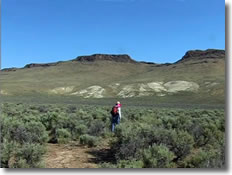 Award-winning cinematographer Paul Goldsmith joined Sierra College's field studies program to film and produce an original production he named High Rock Canyon. Featuring paleontologists Dick Hilton and George Bromm, Volcanologist Brian Hausback and many others, Goldsmith documents one of many such earth science trips venturing into northwest Nevada in search of clues to Earth's past. Weaving scenes of this unique desert region with the methods of paleontology used to explore and explain, Goldsmith deftly creates a documentary of this tedious but fruitful effort under the leadership of museum director, Dick Hilton. A Miocene mammal, the Chalicothere (pebble-beast), related to horses and tapirs, is one of a host of ancient mammals that capture their attention.
Award-winning cinematographer Paul Goldsmith joined Sierra College's field studies program to film and produce an original production he named High Rock Canyon. Featuring paleontologists Dick Hilton and George Bromm, Volcanologist Brian Hausback and many others, Goldsmith documents one of many such earth science trips venturing into northwest Nevada in search of clues to Earth's past. Weaving scenes of this unique desert region with the methods of paleontology used to explore and explain, Goldsmith deftly creates a documentary of this tedious but fruitful effort under the leadership of museum director, Dick Hilton. A Miocene mammal, the Chalicothere (pebble-beast), related to horses and tapirs, is one of a host of ancient mammals that capture their attention.
Goldsmith's awards for his work as a photographic director include productions for television, National Geographic, and film. This evening he will also screen Charmstone, an inquiry into a ubiquitous but mysterious American Indian stone artifact.
 From echidna to platypus to kangaroo and tiger, mammals are extremely important to humans. Providers of major goods and services to us, they are also keystone species of Earth’s ecosystems—both on land and at sea. From the tiniest shrews to the largest whales, mammals provide us with immeasurable value and pleasure.
From echidna to platypus to kangaroo and tiger, mammals are extremely important to humans. Providers of major goods and services to us, they are also keystone species of Earth’s ecosystems—both on land and at sea. From the tiniest shrews to the largest whales, mammals provide us with immeasurable value and pleasure. 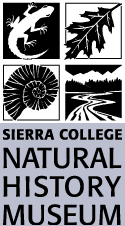
 A brilliant signature of Fall in the High Sierra, the Quaking Aspen dazzles us with yellow, red, and gold leaves, shimmering in the wind. By providing important habitat, aspens form ecological communities rich in biodiversity. Myriad bird and mammal species depend upon them for their survival. Human watersheds are protected and purified by them. Most westerners recognize these beautiful trees by their tall slender trunks of smooth white bark, but few know of their current plight. Today, human activities have reduced Quaking Aspen by more than half its historical range.
A brilliant signature of Fall in the High Sierra, the Quaking Aspen dazzles us with yellow, red, and gold leaves, shimmering in the wind. By providing important habitat, aspens form ecological communities rich in biodiversity. Myriad bird and mammal species depend upon them for their survival. Human watersheds are protected and purified by them. Most westerners recognize these beautiful trees by their tall slender trunks of smooth white bark, but few know of their current plight. Today, human activities have reduced Quaking Aspen by more than half its historical range.  A slide-illustrated lecture on the making of The High Sierra of California, in collaboration with poet Gary Snyder. Mr. Killion will discuss the production of the book and the techniques of multi-block color printmaking.
A slide-illustrated lecture on the making of The High Sierra of California, in collaboration with poet Gary Snyder. Mr. Killion will discuss the production of the book and the techniques of multi-block color printmaking.  Back by popular demand is this lively reenactment of the famous 1903 meeting of President Theodore Roosevelt and California naturalist, John Muir.
Returning to Sierra College for his annual "Muir visit" during Earth Day week, Lee will bring Teddy (Alan Sutterfield) along and perform this popular historical play (written and directed by Lee Stetson).
Back by popular demand is this lively reenactment of the famous 1903 meeting of President Theodore Roosevelt and California naturalist, John Muir.
Returning to Sierra College for his annual "Muir visit" during Earth Day week, Lee will bring Teddy (Alan Sutterfield) along and perform this popular historical play (written and directed by Lee Stetson). Naturalist-artist John (Jack) Muir Laws has created an illustrated field guide to more than 1,700 species of plants and animals of the Sierra Nevada. Currently at press, this comprehensive and easy to use guide will assist all Sierra enthusiasts in the identification of trees, shrubs, flowers, mammals, birds, reptiles, amphibians, fish, insects—even mushrooms and lichens! A tireless field naturalist and teacher, Jack will discuss this enormous project, his life in the field, and his passion for the Sierra Nevada.
Naturalist-artist John (Jack) Muir Laws has created an illustrated field guide to more than 1,700 species of plants and animals of the Sierra Nevada. Currently at press, this comprehensive and easy to use guide will assist all Sierra enthusiasts in the identification of trees, shrubs, flowers, mammals, birds, reptiles, amphibians, fish, insects—even mushrooms and lichens! A tireless field naturalist and teacher, Jack will discuss this enormous project, his life in the field, and his passion for the Sierra Nevada. We live within "reach" of three important volcanic regions—Clear Lake, Mt. Lassen, and Long Valley—all identified by experts as "High Threat" or "Very High Threat" regions. Highly active in North America's turbulent past, these three "sleeping giants" are constantly monitored for potential renewed activity.
We live within "reach" of three important volcanic regions—Clear Lake, Mt. Lassen, and Long Valley—all identified by experts as "High Threat" or "Very High Threat" regions. Highly active in North America's turbulent past, these three "sleeping giants" are constantly monitored for potential renewed activity. Randy Oliver is a commercial beekeeper from Grass Valley, and a bee researcher and writer. His focus is on digesting scientific research from various fields and applying it to practical beekeeping. His articles cover managing the Varroa mite without chemicals, bee nutrition, and the pollination of California's agricultural crops. His presentation will discuss the natural history of one of the world’s most important insects and current concerns for its welfare.
Randy Oliver is a commercial beekeeper from Grass Valley, and a bee researcher and writer. His focus is on digesting scientific research from various fields and applying it to practical beekeeping. His articles cover managing the Varroa mite without chemicals, bee nutrition, and the pollination of California's agricultural crops. His presentation will discuss the natural history of one of the world’s most important insects and current concerns for its welfare.  Costa Rica, a tiny Central American country situated between Nicaragua and Panama is only 51,000 square miles, about the size of Virginia, but it hosts a diversity of species that is unrivaled in the North America. Some say it houses nearly a third of all the Earth's species! It boasts 878 species of birds (57 are hummingbirds), at least 228 species of mammals (mostly bats), 1250 species of butterflies, over 10,000 plants, and more than 400,000 species of insects.
Costa Rica, a tiny Central American country situated between Nicaragua and Panama is only 51,000 square miles, about the size of Virginia, but it hosts a diversity of species that is unrivaled in the North America. Some say it houses nearly a third of all the Earth's species! It boasts 878 species of birds (57 are hummingbirds), at least 228 species of mammals (mostly bats), 1250 species of butterflies, over 10,000 plants, and more than 400,000 species of insects.  Not all plants are benign! More than 600 species around the world kill for their sustenance, and approximately a dozen of these murderers live in the western states of the USA. Dr. Barry Rice has been studying (and growing) these carnivorous plants for more than 20 years, and has travelled widely through the USA to see them. Let him lead you on a tour of the plants that eat meat, and learn how they are actually spectacular and beautiful. You can find out how they capture and digest animals, where you can see them (if you dare!), and even how to grow them. Plants will be on hand for viewing.
Not all plants are benign! More than 600 species around the world kill for their sustenance, and approximately a dozen of these murderers live in the western states of the USA. Dr. Barry Rice has been studying (and growing) these carnivorous plants for more than 20 years, and has travelled widely through the USA to see them. Let him lead you on a tour of the plants that eat meat, and learn how they are actually spectacular and beautiful. You can find out how they capture and digest animals, where you can see them (if you dare!), and even how to grow them. Plants will be on hand for viewing. Award-winning cinematographer Paul Goldsmith joined Sierra College's field studies program to film and produce an original production he named High Rock Canyon. Featuring paleontologists Dick Hilton and George Bromm, Volcanologist Brian Hausback and many others, Goldsmith documents one of many such earth science trips venturing into northwest Nevada in search of clues to Earth's past. Weaving scenes of this unique desert region with the methods of paleontology used to explore and explain, Goldsmith deftly creates a documentary of this tedious but fruitful effort under the leadership of museum director, Dick Hilton. A Miocene mammal, the Chalicothere (pebble-beast), related to horses and tapirs, is one of a host of ancient mammals that capture their attention.
Award-winning cinematographer Paul Goldsmith joined Sierra College's field studies program to film and produce an original production he named High Rock Canyon. Featuring paleontologists Dick Hilton and George Bromm, Volcanologist Brian Hausback and many others, Goldsmith documents one of many such earth science trips venturing into northwest Nevada in search of clues to Earth's past. Weaving scenes of this unique desert region with the methods of paleontology used to explore and explain, Goldsmith deftly creates a documentary of this tedious but fruitful effort under the leadership of museum director, Dick Hilton. A Miocene mammal, the Chalicothere (pebble-beast), related to horses and tapirs, is one of a host of ancient mammals that capture their attention.